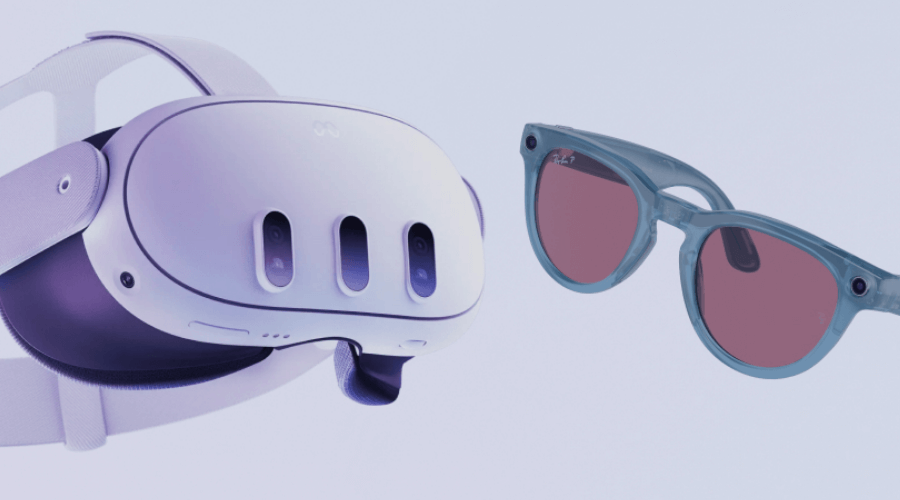In this guide, we’ll explore how augmented reality is revolutionizing modern business, the industries leading the charge, and why AR is the key to staying competitive in a fast-evolving digital economy.
1. Understanding Augmented Reality: More Than Just Digital Overlays
At its core, augmented reality is the integration of digital elements — such as visuals, sounds, or sensory feedback — into a user’s real-world environment. Unlike virtual reality (VR), which creates a fully immersive digital space, AR enhances the real world by layering interactive data or 3D graphics over what you see.
For example, apps like Pokémon GO popularized AR gaming, while tools like Google Lens and Snapchat’s AR Lenses brought it into everyday digital experiences.
However, the future of AR technology extends far beyond entertainment. Businesses are using it to visualize data, improve workflows, and enhance customer engagement — creating a bridge between imagination and execution.
2. The Role of AR Innovation in Modern Business
AR innovation is driving efficiency, productivity, and creativity across industries. According to a report by PwC, AR and VR could contribute over $1.5 trillion to the global economy by 2030. Companies adopting AR are already experiencing measurable benefits — from cost reduction to enhanced user experiences.
For instance, retailers use AR to create immersive shopping experiences where customers can “try before they buy.” Brands like IKEA use AR apps to let users visualize furniture in their homes before making a purchase. Similarly, automotive manufacturers employ AR-based design tools to prototype vehicles faster and with fewer physical materials.
These examples illustrate how augmented reality is not just a trend but a strategic asset. As AR becomes more accessible, its potential to reshape entire business models continues to grow exponentially.
3. AR in Retail: Redefining the Customer Experience
Retail is one of the industries most transformed by AR technology. From fashion to furniture, brands are using AR to engage customers in new, meaningful ways. According to Statista, 71% of consumers say they would shop more often if AR were available.
For example, Sephora’s Virtual Artist app allows users to “try on” makeup products virtually, while Nike uses AR for virtual shoe fitting. This interactivity builds trust and reduces return rates, improving both customer satisfaction and profitability.
In the age of e-commerce, AR innovation bridges the gap between online and in-store experiences — giving businesses a competitive advantage through personalization and engagement.
4. AR in Education and Training: Learning Reinvented
One of the most exciting applications of AR technology is in education and professional training. Instead of relying on passive learning, AR introduces immersive, hands-on experiences that improve retention and comprehension.
In the medical field, Microsoft HoloLens is used to train surgeons by overlaying 3D anatomy visuals during practice sessions. Similarly, industrial companies like Boeing use AR glasses to assist technicians in assembling complex aircraft components, reducing errors and training time.
This form of AR innovation makes learning interactive and scalable — a critical advantage in a world increasingly reliant on remote education and virtual collaboration.
5. AR in Healthcare: Saving Lives with Real-Time Precision
Healthcare is undergoing a revolution thanks to augmented reality. Surgeons, nurses, and medical students use AR applications to visualize organs, plan surgeries, and even practice complex procedures in simulated environments.
Platforms like MedSights Tech allow professionals to create 3D reconstructions of tumors, while EchoAR provides interactive anatomy lessons for students.
With AR technology, real-time guidance during operations reduces risk and improves patient outcomes — proving that innovation in this sector isn’t just about convenience, but about saving lives.
6. AR in Manufacturing and Engineering: Streamlining Processes
In manufacturing, AR innovation is revolutionizing product design, maintenance, and quality control. Engineers can now visualize 3D models, test assembly lines virtually, and troubleshoot equipment using AR headsets.
Siemens and PTC’s Vuforia use AR to overlay digital instructions onto real-world machinery, allowing technicians to perform repairs faster and more accurately.
By reducing downtime and improving safety, augmented reality helps industries save millions annually. The combination of IoT and AR is also creating “smart factories,” where machines communicate and adapt in real-time for optimal performance.
7. AR in Real Estate and Architecture: Visualizing the Future
For real estate developers and architects, AR technology is a game-changer. Clients can now visualize entire buildings before construction begins, walking through virtual layouts and exploring interior designs interactively.
Tools like Autodesk AR/VR and Matterport are helping firms pitch ideas more effectively and secure deals faster. Prospective buyers can use mobile AR apps to view properties remotely, improving accessibility and decision-making.
This level of interactivity was once unimaginable. Today, AR innovation is helping reshape how physical spaces are designed, sold, and experienced.
8. AR in Marketing: Engaging Consumers Like Never Before
Augmented reality has revolutionized digital marketing by merging storytelling with interactivity. Brands use AR-powered campaigns to captivate audiences, increase engagement, and drive conversions.
For instance, Meta and Snapchat offer AR ad experiences that allow users to test products or visualize brand stories in real time. Meanwhile, companies like Coca-Cola have launched AR campaigns that blend digital art and physical experiences to boost brand loyalty.
AR-driven marketing enhances emotional connections and keeps brands relevant in an increasingly competitive landscape. It’s a perfect example of how AR innovation aligns with consumer psychology and technology.
9. The Economic and Technological Impact of AR
The business case for AR technology is undeniable. Research from Deloitte estimates that over 75% of global organizations will integrate AR or VR into their operations by 2025. This massive adoption is fueling job creation, new startups, and cross-industry collaboration.
AR also complements emerging technologies such as 5G, artificial intelligence, and the Internet of Things (IoT). Together, these innovations will drive the next phase of digital transformation — one where data is visual, interactive, and actionable.
Businesses that embrace augmented reality early are not only improving efficiency but also future-proofing their operations in a rapidly changing global market.
Conclusion: The Future of AR Innovation
The future of AR technology is bright — and it’s only just beginning. As hardware becomes more affordable and software more sophisticated, the barriers to adoption are disappearing. From startups to Fortune 500 companies, augmented reality is becoming an essential tool for innovation and growth.
In the coming years, expect to see AR integrated into every facet of business — from marketing and logistics to HR and beyond. Those who embrace AR innovation today will be the pioneers defining the future of work, learning, and customer experience.
In short, augmented reality isn’t just transforming industries — it’s transforming the way we think, create, and connect.




